Special Report: Marques That Have Never Won Best Of Show at Monterey
This year’s Guide to Monterey contains a list of Best Of Show winners and the analyses generated from that information. As accompaniment to that history, this article contains illustrations and narrative concerning several marques (also called make of car) who do not yet have examples that have won the show’s top award.
It shouldn’t be a surprise that European carmakers in Britain, France, Germany, and Italy are well-represented by marques that have received the ultimate award. A glance through the list of Best Of Show Winners and Marques With Multiple Best Of Show Wins in the Guide to Monterey quickly reveals this fact.
However, several marques from the previously identified countries are noticeably absent from this list as are a number of American brands. This section will not delve into why the marques haven’t yet achieved an award. Instead, it contains a summary of each of a few of the missing marques along with representative examples from their respective lines. Future editions of the guide may look at other marques that are not included in this issue of the Guide to Monterey Car Week.
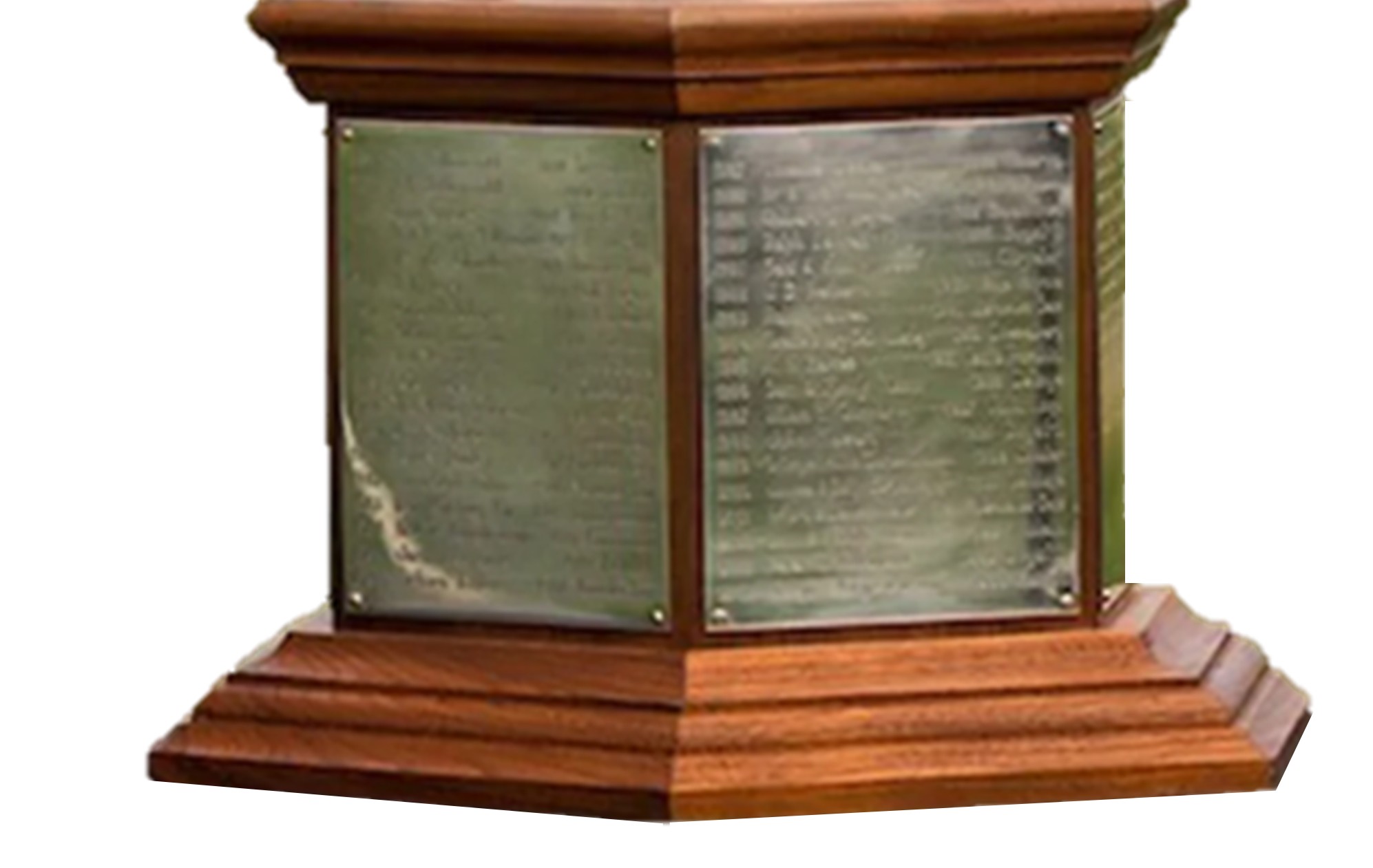
One or more of the marques seen in this section may yet be inscribed on the base of the Best Of Show trophy along with their owner(s) names to permanently commemorate their achievement in a future Concours d’Elegance.
• • • •
Franklin
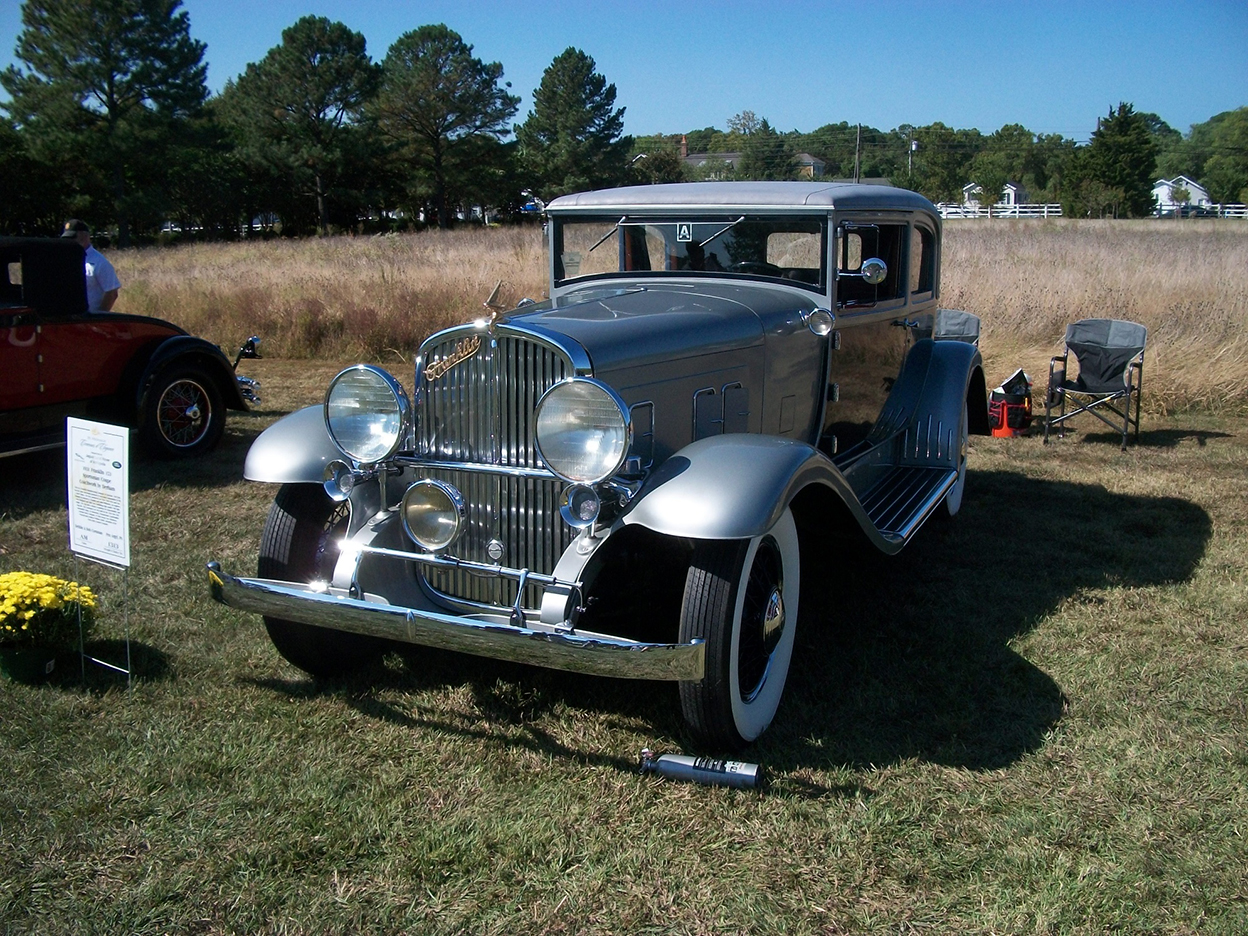
1931 Franklin 153 Sportsman Coupé, Derham. (Author’s Collection)
The H. H. Franklin Manufacturing Company of Syracuse, NY produced cars from 1902-1934 and was founded by Herbert H. Franklin and engineer John Wilkinson. Wilkinson’s guiding principle was to design cars combining high quality with light weight. He also wanted the cars to be as simple to own and operate as possible, hence the company used air-cooled engines which were considered simpler and more reliable than water-cooled engines. Franklin advertised that air cooling eliminated the complexities of radiators, hoses, and water pumps. Franklin quickly evolved into a luxury car maker whose products competed with cars produced by Buick, Hudson, and Jordon. It also cost less to purchase than a Packard or Cadillac, and earned a reputation for being comfortable and reliable to take on long trips. Franklin prospered during the 1920s, in which it reached a peak production of 14,000 cars in 1929, which unfortunately was the same year of the stock market crash and eventual Great Depression. To compete with rivals in a dwindling market that could not sustain all of them, in 1932 the company introduced the Franklin Twelve, named for its a twelve-cylinder engine. Economic forces proved to be too overwhelming, with the result that only 200 cars were produced before the company went bankrupt. This particular car was built in 1930 by Rosemont, PA coachbuilder Derham Body Company. Its first owner was Allentown, PA resident William Erdell, president of the Penn-Allen Cement Company.
• • • •
REO
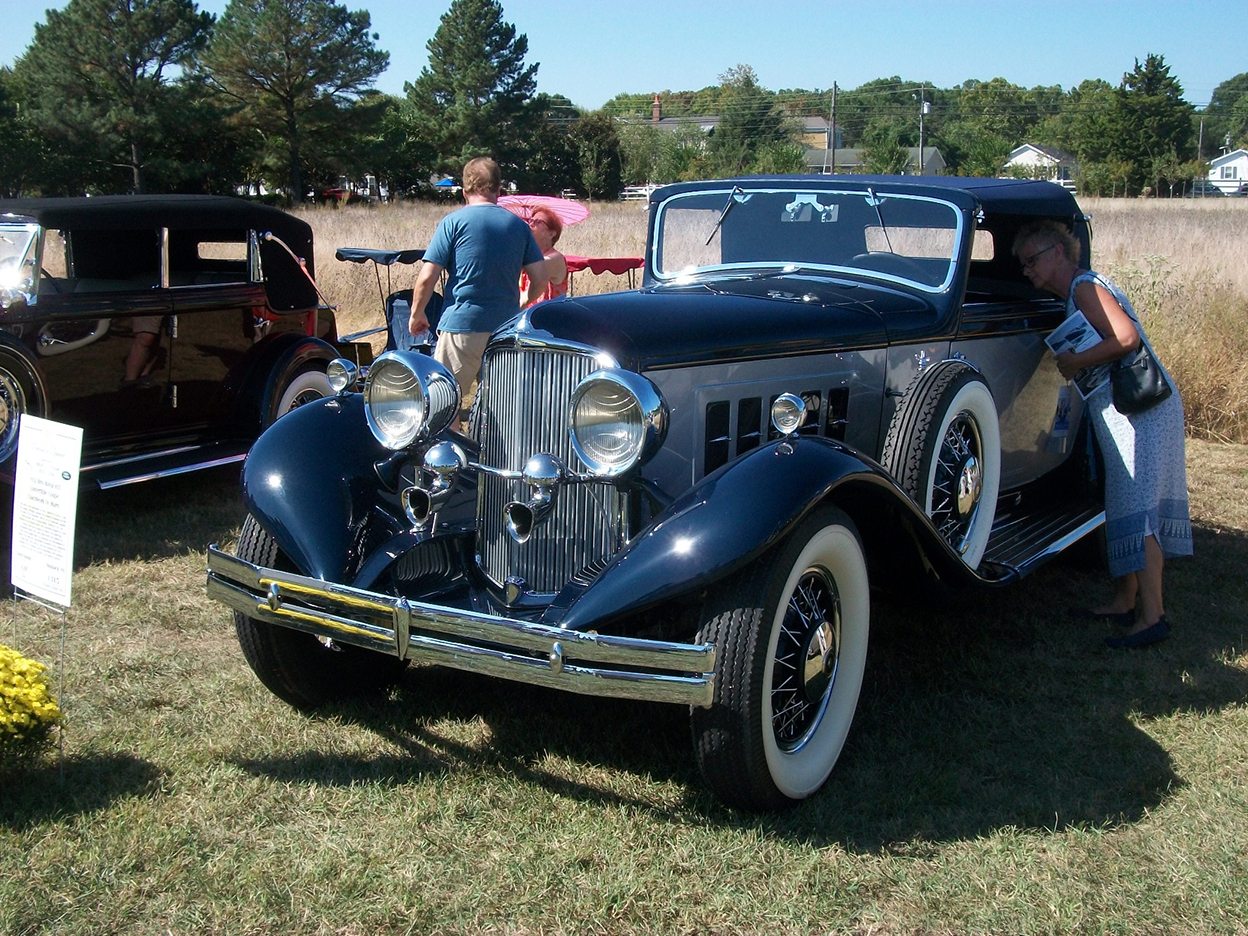
1932 REO Royale 8-35 Convertible Coupé. (Author’s Collection)
In August 1904 Ransom E. Olds was forced out of the company he had founded, the Olds Motor Works, which became part of General Motors. The firm built the curved dash Oldsmobile and was one of the largest producers of automobiles at that time. Olds immediately started a new company in Lansing, MI, using his initials to name it the REO Motor Car Company. The company prospered through the 1920s before entering the luxury car market with the Royale in 1931, whose coachwork was designed by Amos Northup, the chief designer of Murray Body. Northup utilized a wind tunnel to test the streamlining of the bodies fitted on a 135-inch wheelbase and powered by a 358 cubic-inch 8-cylinder engine that produces 125 horsepower at 3,500 RPM. Additional features included a nine-bearing crankshaft, a one-shot lubrication system, thermostatically-controlled radiator shutters, and a handy golf club side storage door. The car pictured here is one of 3,908 REOs produced for 1932, including 176 Royale 8-35 models. In addition, during 1931-1932 only 48 convertibles were produced. The example above is one of just five that are known to survive. Subsequently, REO ceased car production in the summer of 1936 and concentrated its efforts exclusively in the commercial vehicle sector.
• • • •
Auburn
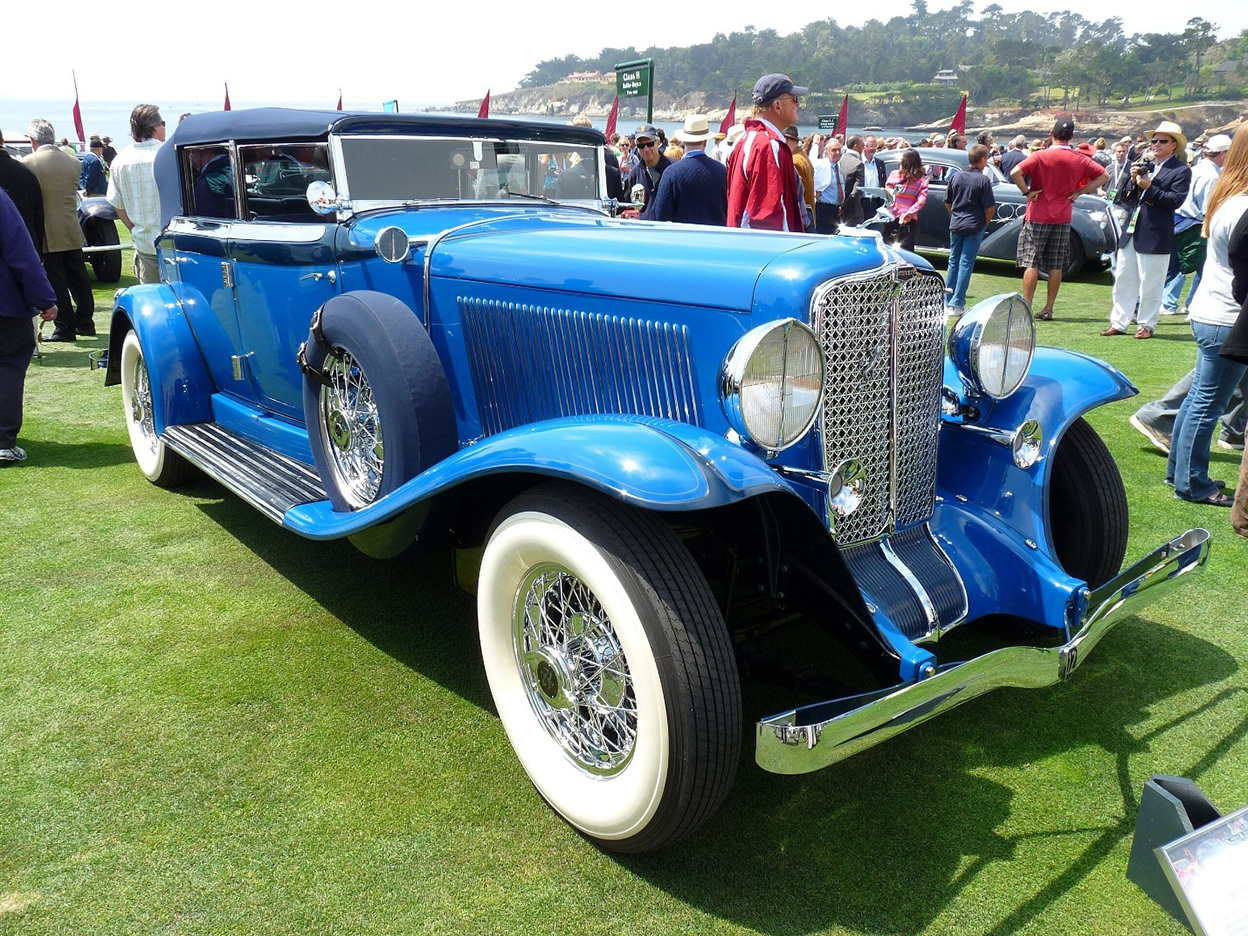
1932 Auburn V12 Convertible Phaeton. (Craig Howell / CC-BY SA 2.0 via Wikimedia Commons)
Errett Loban Cord was hired by the Quinlan Motor Company to sell Moon automobiles. He quickly rose through the ranks to become general manager and ultimately purchased an interest in the company. With $100,000 in his pocket, he was hired by Auburn as general manager and soon purchased a controlling interest in it as well, eventually becoming president by 1926. However, Cord was first and foremost a brilliant marketer who loved cars with lots of “bling”, including bright trim and vibrant colors. In the 1930s, Cord’s Auburns offered multi-cylinder performance and dramatic styling at a price that was noticeably lower than that of many other luxury cars. This V-12 convertible Phaeton, with a Lycoming-built V-12 engine and a 2-speed rear axle, is an excellent example of why the cars were such a success during the difficult economic times of the early 1930s. This Auburn Twelve Custom Phaeton model 12-160A, chassis Number 1572 and serial number 12160A 2572 H, was formerly owned by Larry Dorcy who displayed it at the Pebble Beach Concours d’Elegance in 2009.
• • • •
MG
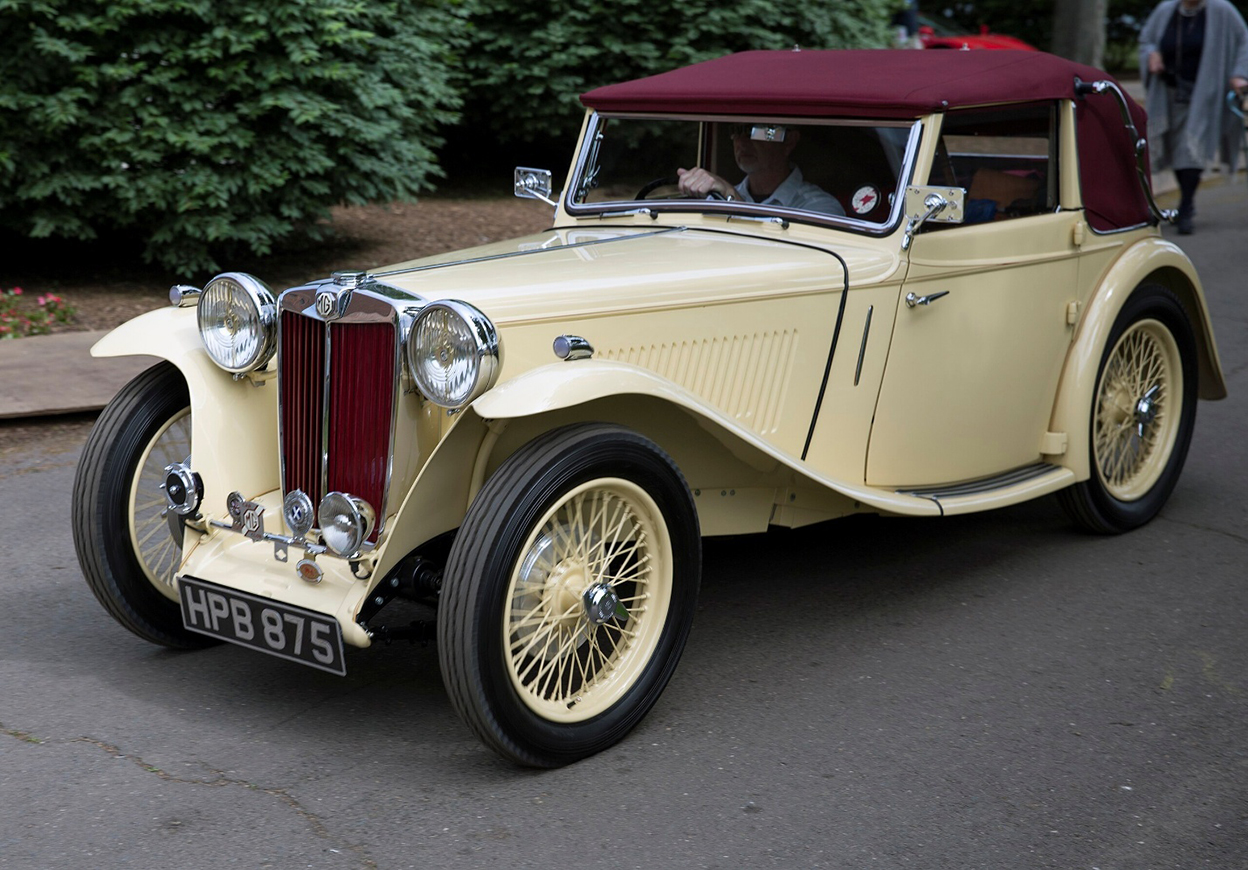
1938 MG TA Tickford Three-Position Drophead Coupé (Mr.choppers / CC-BY SA 3.0 via Wikimedia Commons)
MG or Morris Garages Car Company was founded by Cecil Kimber in 1928. This 1938 MG TA Tickford three-position Drophead Coupé in original “MG County Cream” color is one of just 252 bodied by Tickford, making this an extremely rare car. The car gets its name from Salmons & Sons of Tickford, U.K., the company that manufactured the folding top, which is unique in that it can be folded in three positions: closed, partially opened (also called deVille), or fully opened. Additionally, the windshield can be opened to let in air in the event that the inside becomes uncomfortable. Its heavy and wide-opening doors are mounted on three oversized hinges that have roll-up windows, a feature that is absent on later MG roadsters. As a last note the car’s U.K. license plate number is not listed in the country’s DVLA database.
• • • •
Bristol

1950 Bristol 402 Drophead Coupé (Andrew Bone / CC-BY SA 2.0 via Wikimedia Commons)
Bristol’s heritage was in ground transport after the company’s founding in 1875 as the Bristol Tramways Company. British and Colonial Aeroplane Company, later Bristol Aeroplane Company Ltd, was established as an aircraft manufacturing division in 1910. Eventually, the airplane division overshadowed all other operations, particularly during World War II due to large-scale production of its Blenheim light bomber, Beaufort torpedo bomber, and multi-role Beaufighter. At the end of the war and with an expected drastic reduction in military orders, Bristol Aeroplane’s management decided to enter the luxury car market to keep its workforce intact and diversify in the postwar period. This was a strategy that the company followed after the end of World War I, when it briefly made the motorcycle engine-powered Monocar automobile and began producing car bodies for Armstrong Siddeley and bus bodies for its sister company Bristol Tramways. Seeking to purchase an existing auto manufacturer, in May 1945 Bristol bought a controlling stake in AFN Ltd., a British company who in the pre-war period imported and assembled BMWs and sold them under the Frazer-Nash-BMW brand. AFN had acquired the blueprints for BMW’s pre-war cars which became the basis for the Bristol 400, produced from 1946-1950 by the new Bristol Cars division of Bristol Aeroplane Company. The Bristol 401 was the follow-on model, and the 402 was a convertible version of the Bristol 401. Both models used the preceding Bristol 400’s running gear and BMW-based 2-litre six-cylinder engine managed by a manual four-speed transmission. Bristol cars were more expensive and produced in fewer numbers than their contemporaries, partially due to their manufacture to aircraft standards. As a result, if exclusivity is an advantage in entering the Pebble Beach Concours, a Bristol 402 would have leverage due to only 26 cars being delivered between 1949 and 1950.
• • • •
Dual-Motors
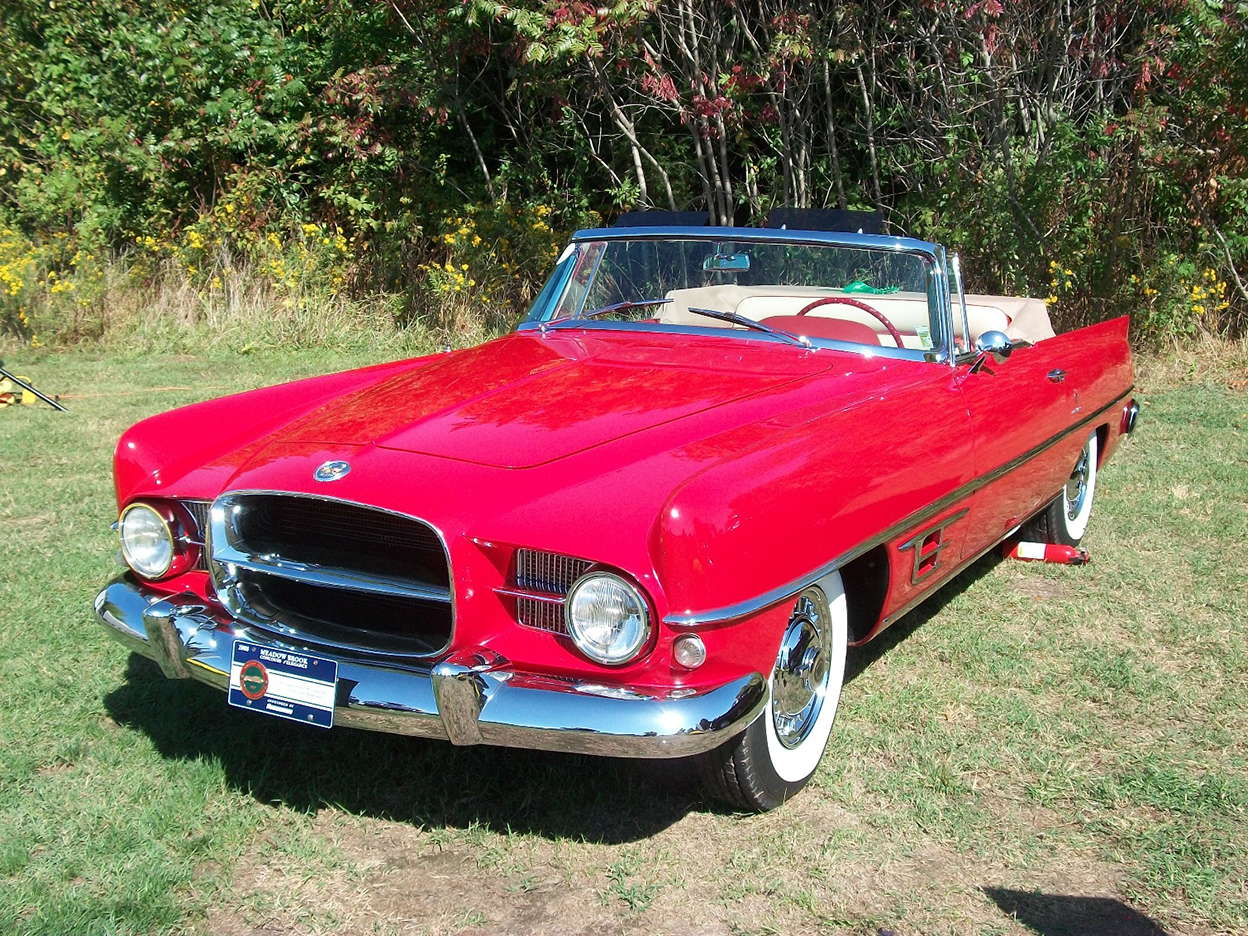
1957 Dual-Ghia D-500 Convertible (Author’s collection)
Inspired by the Virgil Exner-designed Dodge Firearrow show cars of the early 1950s, the Dual-Ghia was conceived by Eugene Cassaroll, who controlled military vehicle maker Dual Industries in Detroit. Cassaroll purchased the design and production rights to the Firearrow concept from Chrysler and then hired respected Detroit designer and racer Paul Farago to produce with Italian coachbuilder Carrozzeria Ghia of Turin a practical steel-bodied grand touring convertible. The build process was very different in that a Dodge chassis was shipped overseas to Ghia where it was modified and fitted with a hand-built body and interior. Then, it was sent back to Detroit for installation of a 260 horsepower-315 cubic inch Dodge D-500 Read Ram Hemi V-8 engine and automatic transmission before delivery to customers. Hollywood “Rat Packers” Dean Martin, Frank Sinatra, Peter Lawford, and Joey Bishop are just some of the period celebrities who owned Dual-Ghias, which also included Eddie Fisher, Glenn Ford, and Desi Arnaz. Known by some as the Duesenberg of the 1950s, their allure was at such a high level that newspaper columnist Dorothy Kilgallen described a Rolls-Royce as “the Hollywood status symbol for those who can’t get a Dual-Ghia”. Initial production of these hand-assembled custom dream machines was planned at 150 per year, but only 117 were actually completed from 1956-1958, as it was reported that Cassaroll lost up to $2,000.00 per car.
• • • •
BMW
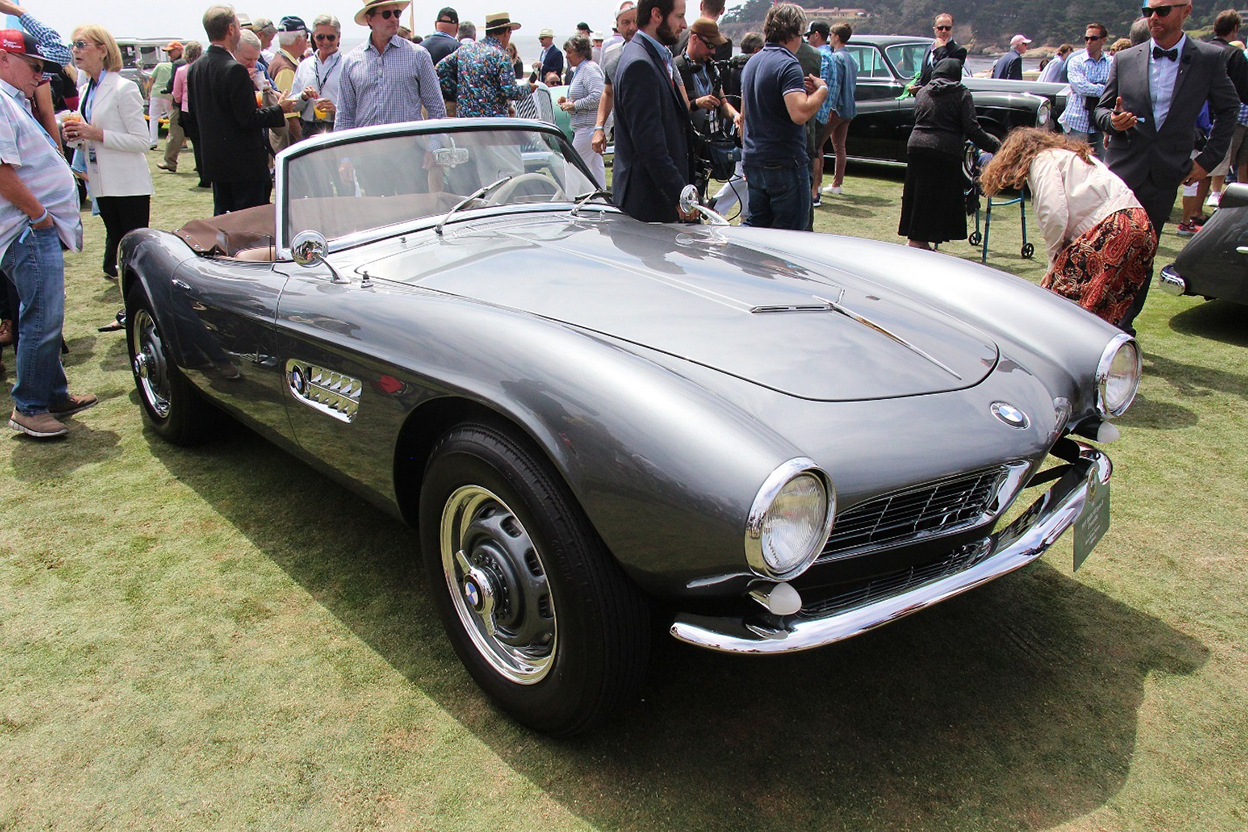
A rare 507 Series II Convertible, similar to the one Elvis Presley owned while in Germany with the U.S. Army and illustrated on pages 11-12 in the accompanying article entitled Automotive Archaeology: The Barn Find.
(Sicnag / CC-BY SA 2.0 via Wikimedia Commons)
Of all of the marques that have never won Best Of Show at Pebble Beach, BMW may be the one that is the most surprising to the average classic car hobbyist. BMW’s heritage as a high-quality motorcycle and automobile manufacturer in the 1920s (and in making aircraft engines well before that time) carries over into today as a recognized luxury brand. It also has several low-production vehicles in its history. This is important if one assumes that a small number of cars results in a smaller number of survivors, and that ensuing rarity is a point in favor of eventually winning Best Of Show at Pebble Beach. One example is the BMW 507 which was built from 1956-1959, an example which is seen above at the 2018 Pebble Beach Concours d’Elegance. Like other manufacturers in the 1950s, BMW wanted a piece of the U.S. sports car market. They developed the 507 as a roadster version of the BMW 501 and BMW 502 sedans for a clientele who wanted a product offering price and performance between the Mercedes-Benz 300SL and the British Triumph and MG sports cars. At its core is an overhead valve 3.2-liter V8 aluminum-block engine, outfitted with twin carburetors, that delivers 150 hp and helped the 507 to outperform many of its contemporaries. Problems with the Series I models led to initiation of the Series II after just 34 vehicles were made. The 507 Series II, one of which is illustrated above, is the model most desired today. The updates included more passenger room obtained from relocating the fuel tank from behind the rear seats to below the trunk, a revised dashboard, a more streamlined convertible top stowage area, and the addition of front disc brakes. However, the car was entirely handcrafted and came with a selling price so high that only 254 were sold. Today, it is one of the rarest BMWs.
• • • •
Iso Rivolta
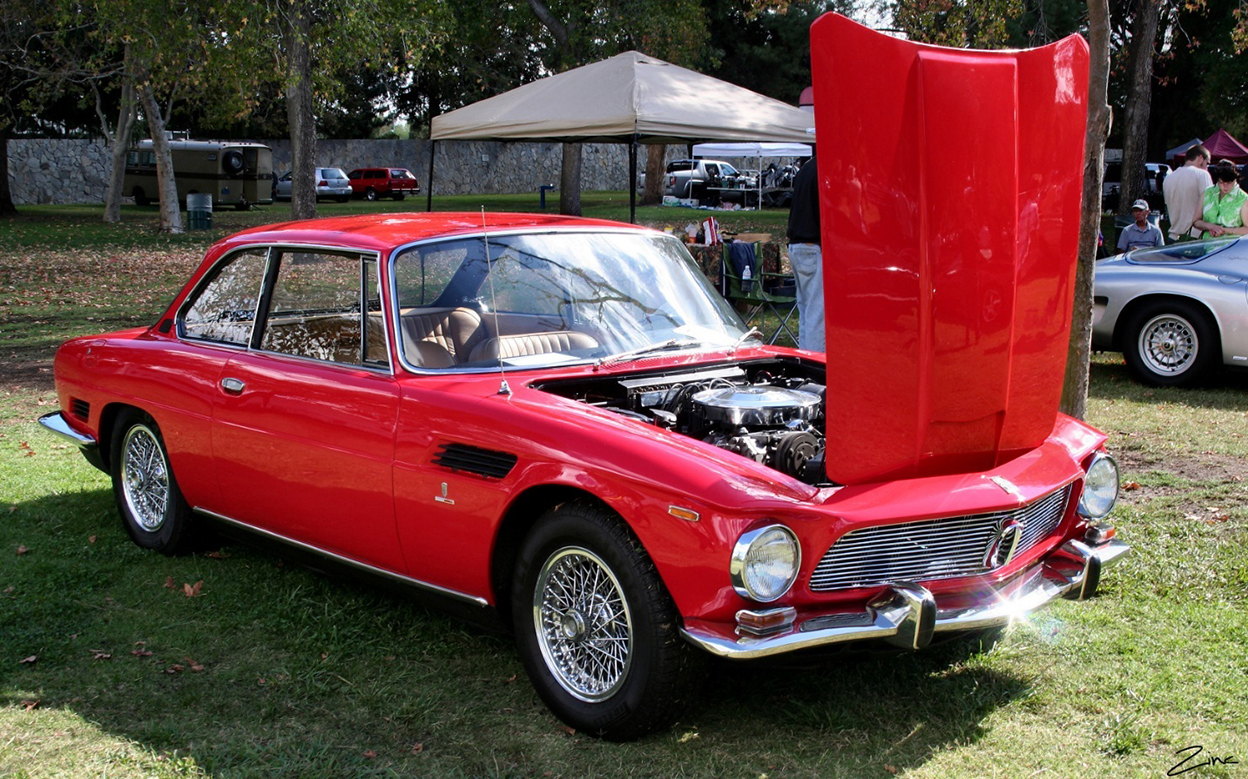
1964 Iso Rivolta GT. (Rex Gray / CC-BY SA 2.0 via Wikimedia Commons)
Renzo Rivolta made his fortune selling refrigerators and motorbikes to the Italian consumer. Like many of the individuals and small independent Italian companies in postwar Italy, he got the “car bug” and tried his hand at building Grand Touring cars. Rivolta’s chief engineer was Giotto Bizzarrini, designer of the Ferrari GTO. He designed the Rivolta and Grifo and later the Lamborghini V-12 engine. The Rivolta is powered by a 327 cubic inch-300 horsepower Corvette V-8 and shifted by a Bog-Warner 4-speed manual transmission. The steel-bodied 4-passenger Rivolta was styled by Bertone and was actually his interpretation of an English automobile called the Gordon Keeble. Just 792 were produced of which about 100 were brought into the U.S.
• • • •
Lamborghini
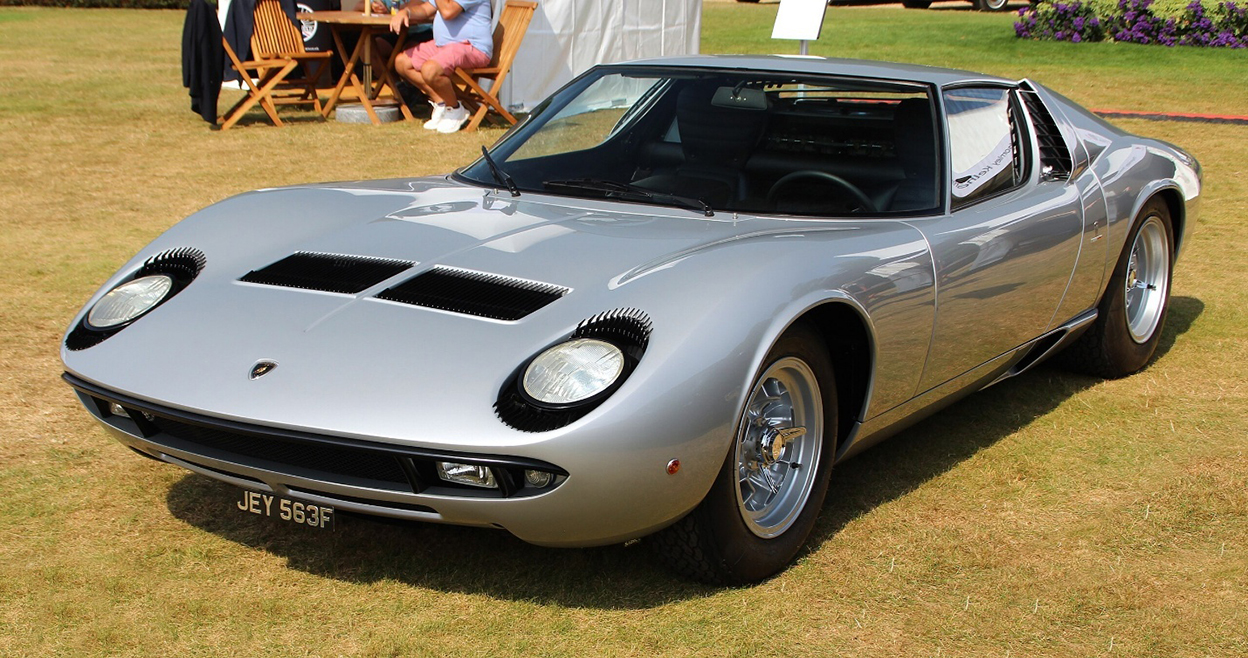
1968 Lamborghini Miura S Coupé. (MrWalkr / CC-BY SA 4.0 via Wikimedia Commons)
Automobil Ferruccio Lamborghini S.p.A. is a relative newcomer to the automotive industry, coming along well after fellow countrymen at Ferrari and others had established products and reputations. This relative lack of history may be a contributor to it being a no-show on the Pebble Beach Best Of Show list, although a 1971 Miura P400 SV Bertone Coupé Speciale took first place in Class O-2: Postwar Sports in 2024. In that same competition, a 1967 Miura P400 Coupé finished second in Class L-2: Postwar Preservation in 2024. Nevertheless, Lamborghini’s first car, the 350GT, debuted in 1963 at the prestigious Turin Motor Show and showed that Lamborghini was a serious contender. However, the Lamborghini Miura prototype that first appeared at the 1966 Geneva Auto Show is the model that set the company apart. The Miura was developed to be the embodiment of a “gentlemen’s racer”; it could win on the track and yet be driven from home and back by its owner. It appealed on many levels with its 2-door fastback Coupé body by Bertone, rear wheel drive, manual 5-speed transmission, and racing performance: a top speed of 174 mph and acceleration from 0-60 mph in less than 7 seconds. Interestingly, company founder Ferruccio Lamborghini did not want to develop the car for sale, as he thought the prototype would generate favorable publicity for the company but that its high price would hinder sales. After production began in 1967, Lamborghini manufactured and sold 764 Miuras around the world. It remains a highly collectible car today. Considering the car’s most recent wins at Pebble Beach as previously noted, it may yet reach the top honor.


